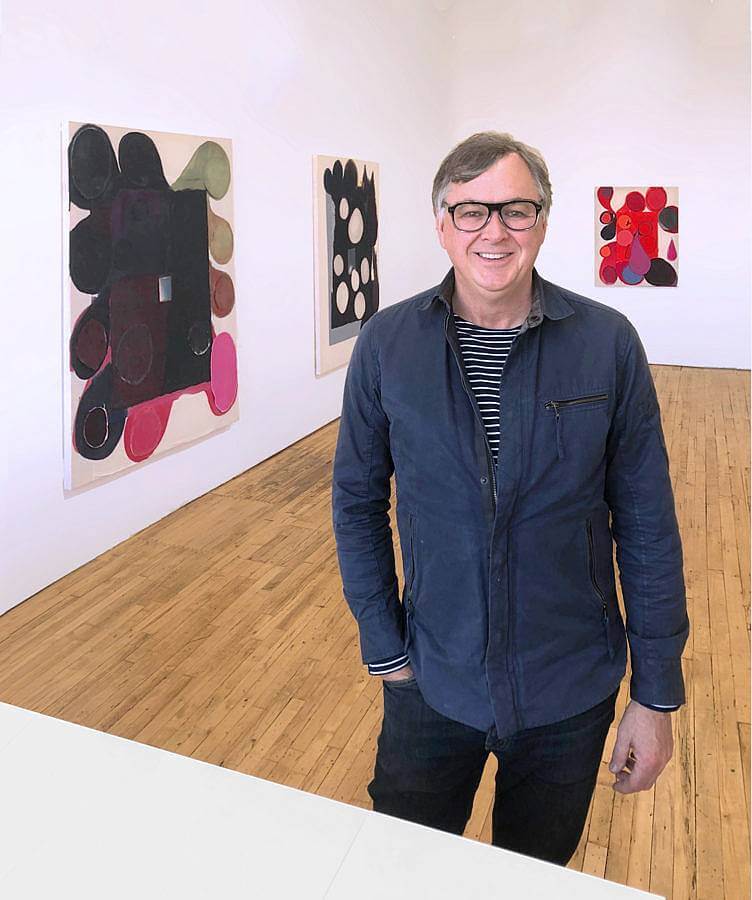Tell us a little bit about yourself and what you do.
My name is Dan Devening; I’ve been living and working as an artist, teacher and curator in Chicago since 1980 when I came to study for my MFA at UIC which I completed in 1983. Since I’ve been at this art thing for a few decades now, I’ve been fortunate to have my work shown in quite a few interesting places, including shows in 2018 in Chicago, New York, Tokyo and Berlin. I’ve also been teaching painting at the School of the Art Institute of Chicago since 1988; I also taught in the Department of Art Theory and Practice at Northwestern University from 1993-2008. I’ve been curating exhibitions locally, nationally and internationally since about 1987; in 2007 I opened Devening Projects, a gallery space that features work by emerging and established artists from all over the world. The gallery is located in East Garfield Park. I’m also co-director of Paris London Hong Kong, a small exhibition space in the West Town District of Chicago that I run with Aron Gent. In 2005, started Devening Editions to produce artists’ editions and multiples. My studio is in East Garfield Park and I live in Logan Square with my partner Sarah Polster.
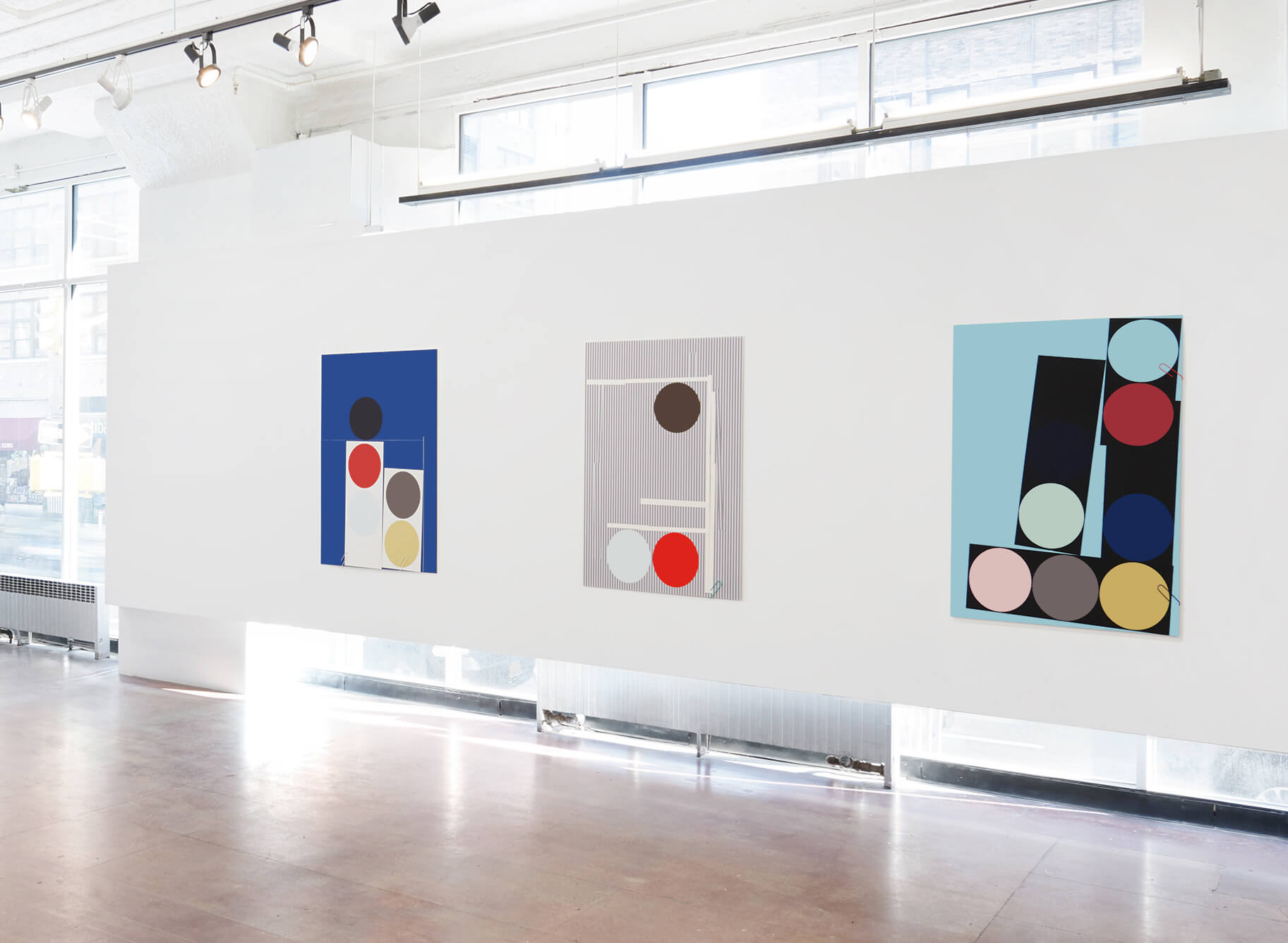
What are some recent, upcoming or current projects you are working on?
This summer I was very fortunate to spend a month in France as a Brown Foundation Fellow and artist-in-residence at the Dora Maar House in Menerbes, Provence. I was one of three residents in a big beautiful house in a small Provencal village that was once owned by Dora Maar, the former partner of Picasso. During the month of June, I completed series of works on paper that have been ongoing for the past couple of years. They’re a kind of formalist’s response to the growing nationalism we see in this country at the moment. I use the simple geometry of a flag (horizontal rectangle) as an indexical visual element to flatten or block-out the expressive and dynamic paint fields behind. On one level the work operates through a purely formalist strategy; on another, it uses abstraction to illustrate the negative tendencies of our current administration. For me both ways of seeing the work are feasible, but what moves the project forward is how it might be possible that a purely formal move might reveal a political position.
In terms of recent projects, in January, I opened a two-person show with Andy Hall at Geary Contemporary in New York and in December, I showed new work with Laura Davis at 65Grand in Chicago. Both shows featured some larger works on paper using simple geometries and structures. Last spring, I showed with three other artists at Hagiwara Projects in Tokyo and had then had second exhibition at Grolle Pass:projects in Wuppertal, Germany. 2018 was an unusually busy exhibition year for me, and with running the galleries and teaching, I’m looking forward to the luxury of a slower pace and some studio time to recalibrate my relationship to my work. I’m lucky that my studio is in the same building as Devening Projects so there are times when I can juggle both nearly at the same time.
As the director of Devening Projects, I’m always opening a show, scheduling an upcoming show, doing a studio visit, organizing a shipment or perfoming one of the other many of the tasks that help keep the gallery thriving. I opened shows in late February with Nancy Ford and Nathaniel Robinson, two artists from New York. In April I’m looking forward to featuring Sean Sullivan in his second exhibition and first curatorial project. The show will include six other artists with whom Sean feels a strong affinity despite the fact that he has met few of them in person. That will be the last show of the 2018-2019 season and I will then spend some time traveling and on my own work.
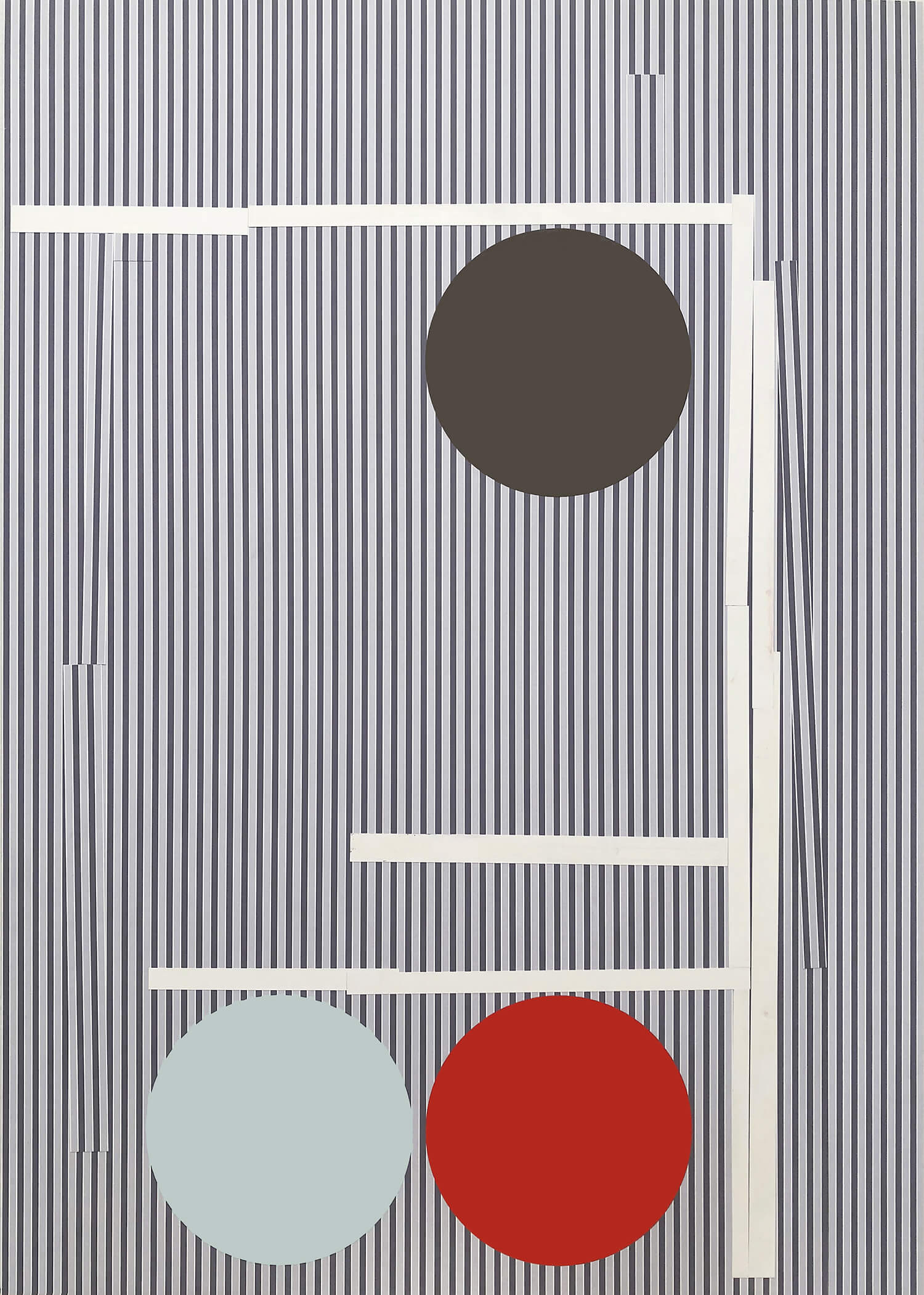
In your practice, what materials do you use and what is your process like?
Mostly I’ve been working with paper, digital prints, thread and a collection of water-based pigments to make collages of varied scale and complexity. I really like finding use in material that I have on hand, be it older digital prints, papers purchased for past projects or paint that I have laying around. I’m feeling the burden of a long career being and artist and all the work that I’ve produced over the years. Working with paper means it takes up less space and might be used sometime in the future in some new work.
I think of my practice as a choreographed set of eccentric moves that attempt to produce something unified and codified. I like how each step in the process provides an experience that is quite different from the next. A work might include gestural painting; then go to the addition and accumulation of geometric elements; then to hand sewing. Each move seems to satisfy a distinct need in me as a maker. I like the diversity of these making-methods and the tensions that result.
If you had to explain your work to a stranger, what would you say?
I make collages from underused materials that subvert the negative associations of the “throwaway” in order to build something formally sound and visually satisfying. Typically the work employs a simple and direct language of geometry, gesture and assembly. I make the joinery of these disparate elements visible and critical to the experience by sewing, stapling or attaching with paper clips. I think that revealing the joinery brings the viewer into the experience of making and suggests the potential for alternative possibilities. Color drives many of the compositional decisions in a work; color also acts as the emotional trigger for how the work might be experienced. Together, I hope that comes together is something evocative, pleasurable and surprising.
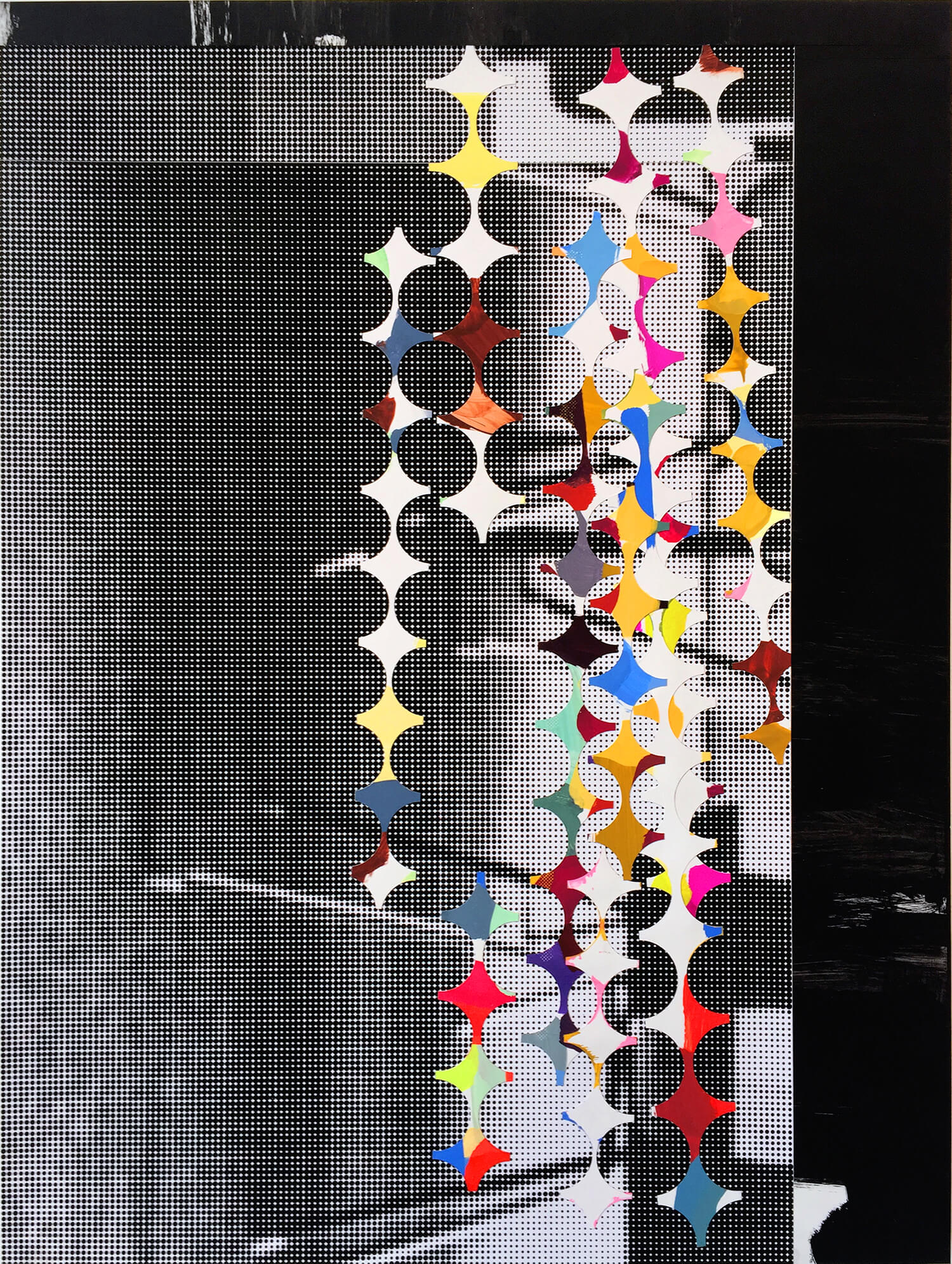
What’s your favorite thing about living and working in Chicago?
I’d have to say it’s some combination of the rich cultural diversity, a thriving and complex art community, and the lively music and restaurant scene that make it such a great city in which to live and work. Chicago is affordable, manageable and always surprising. If only the surrounding landscape wasn’t so monotonous it would hit every mark. The lake certainly adds a beautiful contrast to the density of the city and I try to use the lakefront to recalibrate and connect with space and light as often as I can.
What was the last exhibition you saw that stuck out to you?
The show that stuck with me most recently was the Christopher Wool exhibition at Corbett vs Dempsey’s new gallery. The pairing of large muscular paintings with delicate and improvisational pigment drawings on prints struck a beautiful and very satisfying balance. It was also a stunning exhibition with which to debut their gorgeous new space. Congratulations to John and Jim and all the folks at CvsD and thanks to them for always being such gracious gallerists and for bringing such important new art to Chicago.
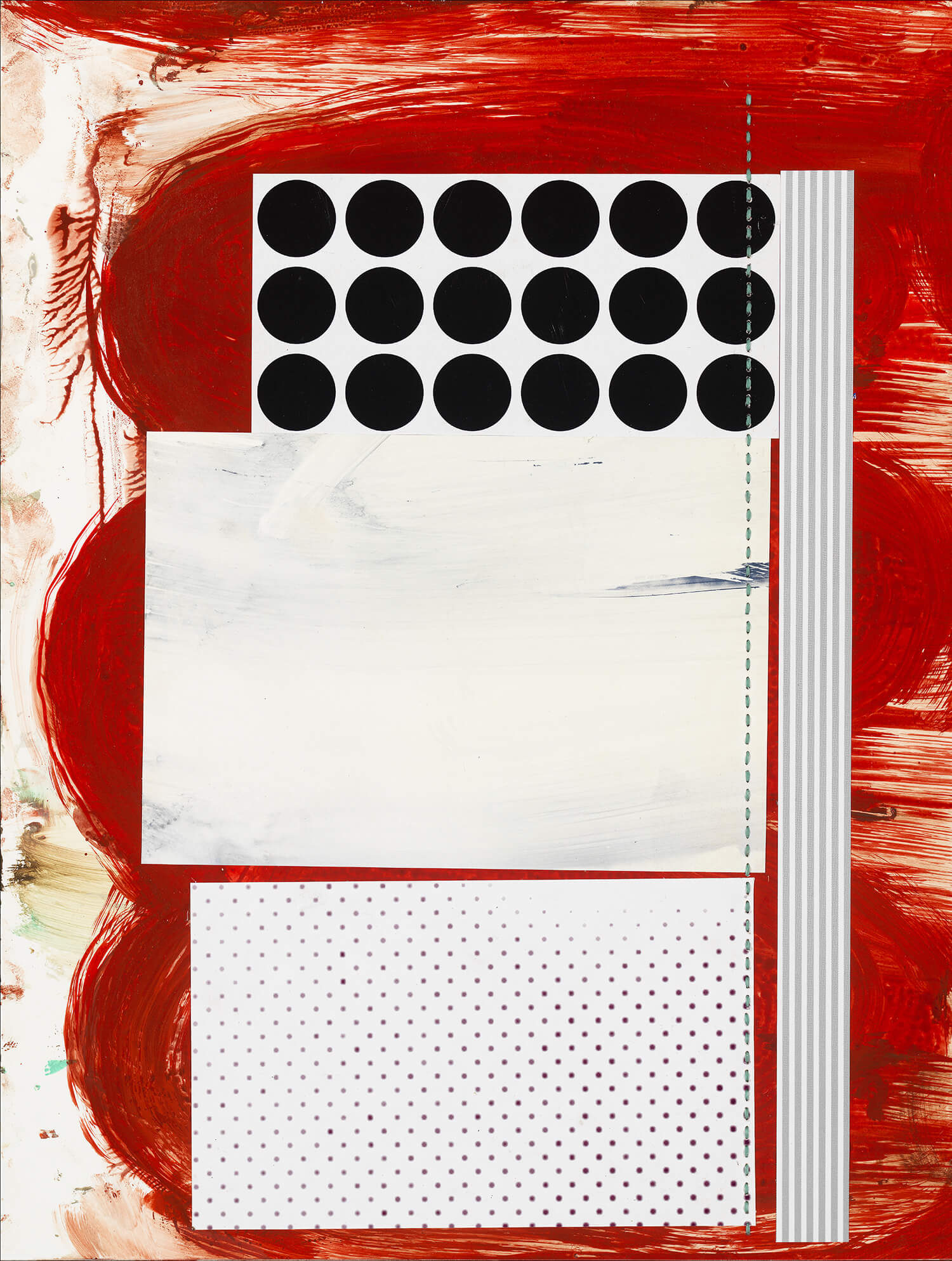
Describe your current workspace and the different roles the space plays.
I guess I have a couple of “work spaces.” The Devening Projects galleries and my personal studio are adjacent to each other in the same building so movement between the rooms is quite easy. In fact, it’s become the most viable way to juggle my personal studio practice with directing a gallery. I’ve considered moving the gallery to a more public and “fancier” space, but the proximity to where I can work on my own projects would always be in jeopardy. Currently, I have three spaces in the Carroll/Albany Arts Building in East Garfield Park; two of those spaces are used primarily as exhibition rooms and the third is a studio with some gallery storage. When I’m not hosting exhibitions—which would include most of the summer—I take over all three rooms for personal studio actions. Since I’m not presenting exhibitions from mid-May to early September, and I’m also not teaching, the focus is the studio. I spread out and make use of the walls to work through ideas that I couldn’t fully realize during the rest of the year. During the rest of the year and when exhibitions are happening, I work in the smaller studio; a perfectly adequate and satisfyingly functional space with great light. Wherever I’m working, that activity happens primarily on big table where I can spread out the materials I use for the collages. When I need to look at/think about finished pieces, I can take them in to the gallery temporarily or use one of the empty walls in the studio. As I’ve become more “seasoned” as an artist, I have deromanticized the studio a bit and now feel I can work easily and productively in less space and with more distractions. I realize I just need to get the work done; however that happens is what’s important.
I have been in this building for almost 15 years and find the community of artists, designers and craftspeople to be the perfect environment within which to work. I’m lucky to have several friends here who can help with fabrication, do high quality digital printing (Loupe) and design work. It’s a real hive of creative energy and I would miss it immensely if I was to move my operation elsewhere.

How does your curatorial practice influence your studio work. Or vice versa?
Probably the most significant result of curating comes out of the conversations I have with the artists with whom I’m working. Discovering what drives their practice; what they hope to see happen within their exhibition; and how they’d like to use the space all lead to new ways for me to think about my own current projects. The curatorial/collaborative relationship that occurs during preparation for a show is nothing but a joyful experience for me. Even when there are disagreements about what work might be shown or how to use the space, the conversations always lead to some new way of thinking about the work or the gallery that is nothing but positive. How these decisions get worked out is really at the heart of any curatorial project, and I love every minute of that time.

What do you want a viewer to walk away with after seeing your work?
That’s an interesting question. I’d have to say that I have very few expectations from anyone looking at my work. I think that if there’s enough of a visual charge—color, scale, material, etc.— to get someone to spend more than a couple of seconds with a work, it means that they might discover something unexpected, surprising and/or rewarding. Of course that’s always my hope. There are always great rewards to those who connect with an artwork through an extended encounter, deep and slow looking and direct proximity. Art works tell their stories slowly and mysteriously. All artists want a viewer to look—really look. That may be a lot to ask in a culture of high-velocity image exposure. I think I intentionally make work that can provide a quick and satisfying experience because color and image appear assertive and simple, but what is ultimately revealed might be something more hidden and or veiled. This might be information about production, material assembly or pictorial space; or it may simple be an overall structural system that wasn’t visible earlier. Although, I’ve been pushing my work to be clearer, less mysterious and extremely direct, there are always complex nuances that exist in the work to enrich those who seek them out.
Like any artist, I’m hope for the most inquisitive viewer, willing to ask questions, dig deeper and work a bit to uncover something that isn’t easily visible. Whenever I make a work, I think of the poet and celebrated art critic John Yau as my ultimate viewer. He has an incredible eye for painting and ability to see deep into a work. Once excavated fully, he often then magically articulates those discoveries in ways an artist has never imagined. For me John will always be the viewer for whom I wish the work to be seen. He knows that what’s slowly revealed in a painting is ultimately is most valuable gift.

Do you have any advice for emerging artists?
Most of this advice may sound familiar, but here goes:
-If you’re just out of undergraduate school and thinking about getting an MFA, wait a few years; when you decide to pull that trigger only go to a school that will cover your tuition. There are incredible schools out there looking for interesting young artists and they’re willing to make it very financially attractive for them. Those schools may not be the top five that every other young artist wants to attend, but many of them are solid and full of incredible faculty and facilities. Many of those schools also offer opportunities to teach or to be a teaching assistant so you’re add that experience to your resume while getting your graduate degree.Keep in mind that leaving grad school with soul-crushing student load debt will not only add pressure to an already challenging early art career, it will put too much focus on making enough money to pay off that debt.
-Once you’re out of school, find an effective and supportive community; build that community from school friends and peers and keep adding to that hive network as your career grows.
-Develop a financially viable second skill that isn’t soul crushing, that gives you enough money to live on and doesn’t take up all or your time or mental space. It should be a skill that doesn’t interfere with your personal practice but you find interesting enough to see as a second career direction. Artist friends have started as art-handlers and developed those skills into their own businesses. Others have worked as servers in great restaurants. Those gigs typically have flexible hours, will always feed you and often pay more than a very boring office job.
-Figure out exactly what you want (a successful gallery-showing career artist; to teach at the university level; to work in a museum; to live on an island) and set up a series of goal-oriented steps that will allow you to achieve that goal. Be focused, determined and persistent. You’ll eventually get what you want if only you stay directed.
-Ask people for help. With everything you do; get help from people who have skills, contacts, knowledge that you don’t. People love to help and feel great when they’re recognized for having something special that might help someone else.
-Whatever kind of artist you might be, carve out a space and time to work. The space could be a room in your apartment or a fancy studio, but it must be exclusively for art making. Make sure you also find time to use that space. One of the artists I represent has a family and a full-time job. He gets up super early just to work in the studio before he heads to his day job. He makes more work that most artists I know.
-Ultimately all of your success will come exclusively out of the work you do as an artist—not the social networks you cultivate or the connections you make. Those are only superficial factors; your work needs to stand on its own as the reflection of your very singular voice. Trust that voice and cultivate it to point where it unlike anything else we’ve ever experienced. See you studio as the place where you ask questions—fearlessly; where you find joy and satisfaction; where you’re inspired and ultimately driven to never want to leave. Be in that place even when outside acknowledgement isn’t there. It will come and you will be ready.
-My go-to advice for young artists is give them this link to a commencement speech that the artist Teresita Fernández gave to a graduating class at Virginia Commonwealth University in 2013. I think it’s one of the most eloquent and animated recitations on the life of an artist, emerging and/or established. Listen; you will leave inspired.
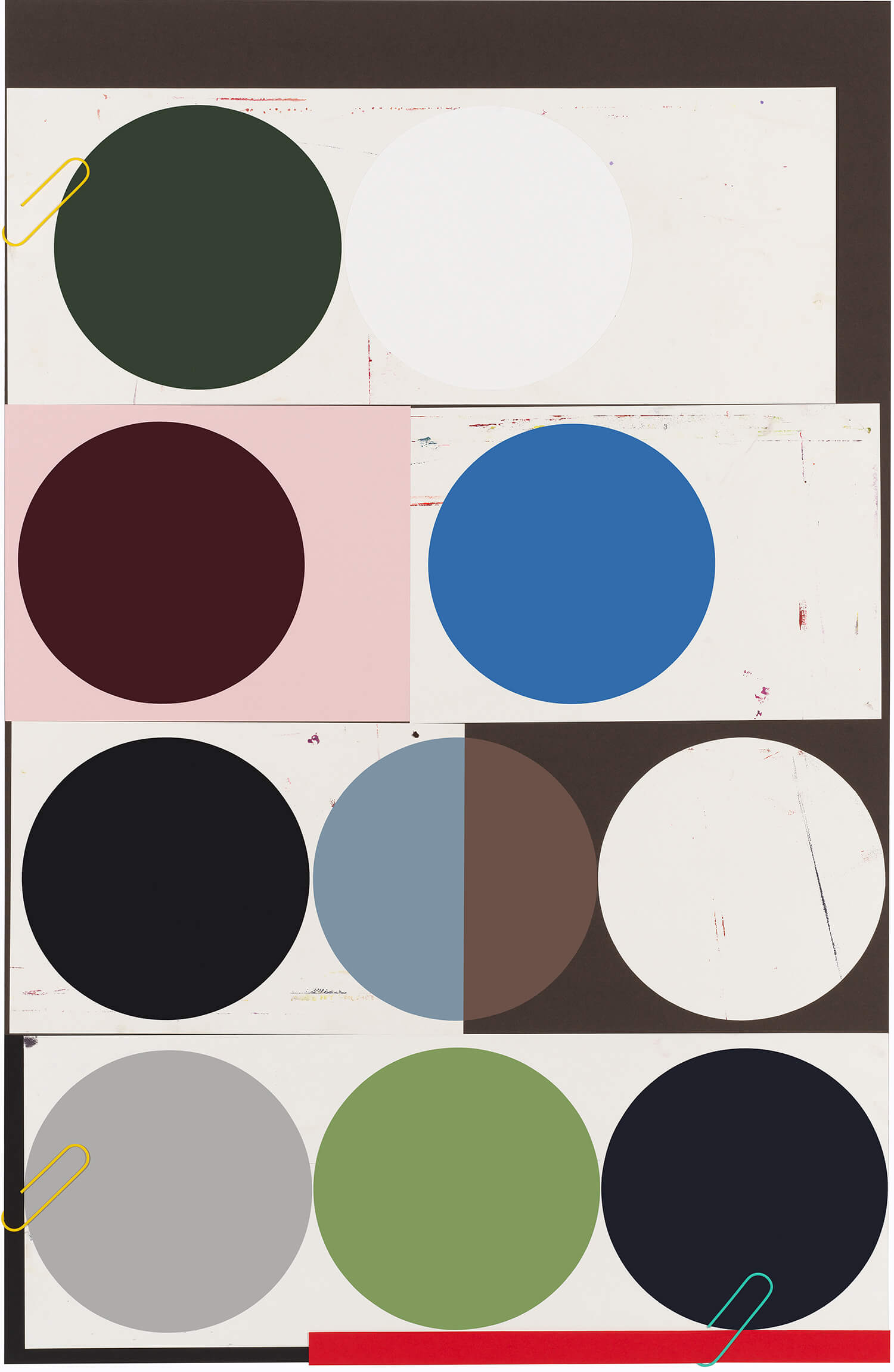
What is one of the bigger challenges you and/or other artists are struggling with these days and how do you see it developing?
I think that for any artist—young or old—building a practice, staying passionate about the work despite life challenges, keeping and paying for a studio, developing and sustaining a viable career, and doing all that while having a personal life are the greatest challenges they face. It’s all wrapped into one messy and complicated way of life. But I think those challenges are exactly what keep artists gong forward and making work. There are so many unknowns to waiting to be known (to quote Teresita Fernandez) that there really may be no other choice than to keep thinking, making, doing. If you’re an artist and it’s what you love and what you need to do, then you’ll find a way to keep that engine running and the train on the tracks.
What is one of the key elements you consider when installing work?
I love installing shows and think I’m pretty good at it. What I desire most with each installation is to create an experience that differs from all previous shows. That’s not always easy and every exhibition offers its own set of exciting challenges. Sometimes an artist will come in with a very specific plan that we follow to the letter; other times, there may be a full day of moving work around give the show the appropriate space, light and movement. I dig both ways of working but always let the artist lead. Ultimately, it’s their work and they should be satisfied with how it’s presented.
I’m a little maniacal about the height of work in a show. Most of my “heated” discussions with artists occur when we start hanging paintings or works on paper. My preference is lower than normal; if too high, the work seems to float off the floor and up towards the ceiling. Artists vary dramatically on this point so it always takes a little time to figure out when and where we’re both happy.
Besides that, I think that the gallery room is as much factor in the pacing and rhythm of a show. How much wall space does a work need? Does assembling constellations of works feel better and reflect the practice of the artist? Is it best to keep it simple and absolutely even throughout? All of these questions keep every installation exciting and fun.

Where do you see your practice going next? Any major changes happening in the studio?
For the past few years, I’ve been working mostly on or with paper. I’m looking forward to taking some of the strategies developed in those projects to works that read more physically like paintings. The assembly and collage processes I’m currently using can be carried over into stretched canvas but there might be a bit more physical presence; more assertiveness in the applied elements. Of course I can clearly visualize all of that work; now it’s simply a matter of bringing those visions closer to reality.
The other goal is to continue to figure out how to keep the balance between artist, teacher and gallerist in balance. Each carries equal weight for me so I’m constantly trying to ease the pressure from one to make room for the other. If I continue to wear all those hats, that challenge will certainly continue.
Besides that, I am very excited about all the new work I’m planning and the shows I’m organizing for the galleries. I am extremely fortunate to have such a fantastic set of platforms from which to launch my projects. Fortunate and grateful for all the support I’ve received. Thanks to Chicago for hosting me for the past 40 years.
